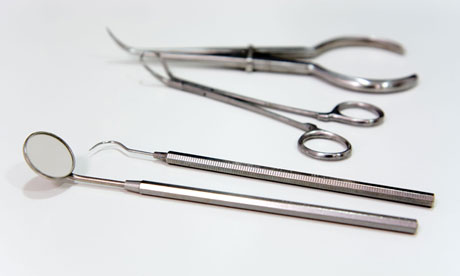
Dental amalgam is used to repair cavities caused by tooth decay. It's not new. Dentists a century and a half ago were using it. About half of amalgam is made of mercury, the rest from other metals such as silver and tin. Dentists say it is the strongest, cheapest and longest-lasting filling in the business. The NHS won't pay for back teeth to be filled with anything else. But in the past 20 years mercury has been identified as an environmental hazard and linked to Alzheimer's disease, multiple sclerosis, kidney and brain damage.
Two months ago the Minamata Convention on mercury, a treaty agreed by the UN Environmental Programme, committed itself to reducing mercury use worldwide, including in dentistry. Should you worry about having a mouthful of mercury?
The solution
The mercury in fillings releases low levels of mercury vapour, which is absorbed into the bloodstream in the lungs and then taken to the kidneys to be passed out in the urine. High levels of vapour are associated with harming the kidneys and brain. But research shows that even if you have 15 fillings, the vapour you release is too low to cause harm. This week a small research study published in Environmental Science and Technology claimed that the test most commonly used to measure exposure from dental amalgam may even overestimate the amount that comes from fillings.
The bulk of research evidence finds no link between amalgam and health complaints, except in those who are allergic to mercury (about 3% of people) who may get mouth sores and skin rashes.
The scientific committee of the European Commission reported in 2008 that there was no evidence that dental amalgam caused health problems and warned that much more was known about its safety than newer types of filling. However, it did say that amalgam was best avoided by pregnant women and children under six.
Studies in the Journal of the American Medical Association show no adverse effects on the brain or kidneys in children over six, and in the US the Food and Drug Administration says it is doubtful that traces of mercury would reach risky levels in children under six.
Not everyone agrees – a paper in the Journal of Occupational Medicine and Toxicology criticised the EC report for citing poor research. But that paper, in turn, cited autopsy studies that are not designed to examine whether mercury levels caused health problems.
No mainstream dental organisations recommend you replace your amalgam fillings as long as they are in good condition and there is no decay beneath them. Drilling out amalgam will make you lose more healthy tooth and the process will expose you to considerably more mercury vapour than if you left it well alone.

